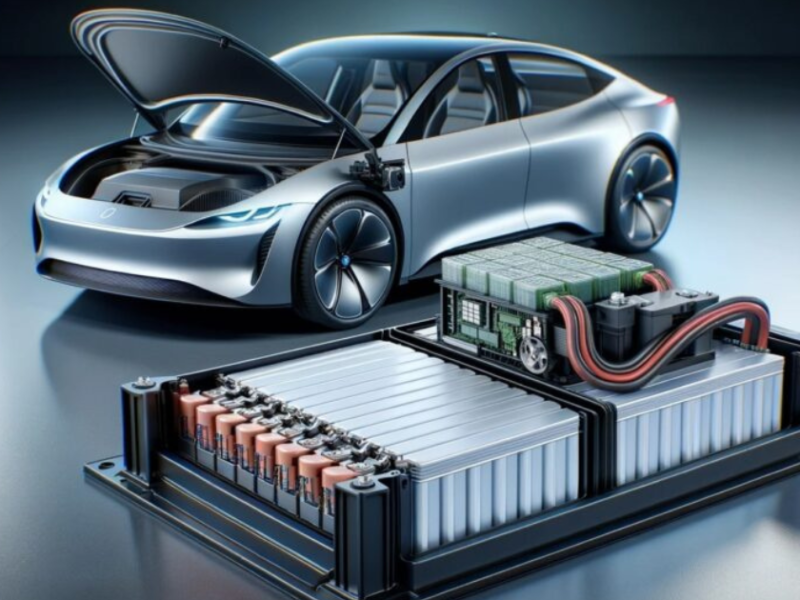Google will invest $4 million in the Indian conversational AI startup Corover.ai.Google in talks to invest $4 million in BharatGPT This is just one more indication that the AI startup landscape in the nation is about to explode. According to the Economic Times, Corover is one of a few Indian firms developing BharatGPT, an indigenous large language model (LLM) that promises to accommodate over a dozen Indian languages. Despite signing a contract with Corover in March of this year and providing non-equity funding of $500,000, the people stated above indicate that Google is in discussions to offer $4 million in equity when BharatGPT formally starts in the coming weeks. They noted that the company has received much of the $500,000 since March, with the remaining cash anticipated to be paid by December. Corover receives recognition from Google as a “strategic partner” in exchange for using cloud computing. According to the monAccordingiders, would the money infusion be utilized in the following weeks to scale up BharatGPT Corover’s current backers include IT-Delhi, CanBank Venture Capital Fund, Lead Angels, Cognify, and Karekeba Ventures. In 2016, Corover was established. Tracxn reports that the firm was valued at $8.5 million in December 2022.
IRCTC, NPCI, ICICI Prudential, ITC, Max Life Insurance, Bosch, Karnataka Tourism, Israel Tourism, Chandigarh Smart City, Car, and Bike are among the startup’s current partners and clients, according to its website. Experts claim that foreign tech corporations focus on several domestically formed enterprises that deal with Indian languages to improve their AI capabilities, especially in the several vernacular languages spoken in India.
- According to recent media reports, tech giant Google is considering investing around USD 4 million in the domestic conversational artificial intelligence firm Corover.ai.
- A small group of Indian entrepreneurs, including Corover, are in charge of developing BharatGPT, a sizeable indigenous language model (LLM) that is said to accommodate over a dozen Indian languages.
- Google reportedly signed a deal with Corover in March of this year and made a non-equity investment of USD 500,000. Talks about investing USD 4 million in equity followed the announcement that BharatGPT will officially debut in the upcoming weeks. It’s expected that the fresh funding will be received by December.
- According to the article, Google acts as a “strategic partner” by giving Corover credits to access cloud computing. The money received would be used to expand BharatGPT.
Corover and Google have not yet provided formal comments on the issue.
The goals of Corover, founded in 2016, are praised by Prime Minister Narendra Modi and other world leaders. The company’s purpose is to allow consumers to communicate with any technology in the same manner as they would with an intelligent person. Google, Microsoft, Mahindra, Accenture, KPMG, UI Path, Automation Anywhere, IRCTC, Finastra, and other resale partners presently support this mission. Artificial intelligence is currently the main topic of discussion in technology. Large multinational corporations strive to expedite the service based on this. Startup enterprises in India are just a little behind in this competition. Conover introduced the big language model Bharat GPT in Bengaluru AI. According to the corporation, this location will offer services in over a dozen regional languages. Bharat GPT will take the position of OpenAI’s Chat GPT in the US. Right now, Microsoft is the company with the most significant Open AI investment. The IT behemoth Google will probably put much money into India’s GPT. Media sources state that Google has already provided CoRover AI with non-equity funding of more than Rs 4.16 crore. March marked the start of the procedure. Rumours are circulating that Google may spend $4 million (33 crore rupees in Indian currency) in the India GPT.
CooverAI uses Google Cloud Computing. The firm and Google have a strategic alliance. In the coming weeks, Bharat GPT will officially announce the investment.
An Indian-made generative AI model is called Bharat GPT. The firm started its journey in 2016. You may find almost all the services offered on OpenAI Chat GPT here. The support for 12 regional languages is a benefit, however. The business says the chatbot is equipped with data from photographs, videos, and maps. Currently, 95 languages are supported by Chat GPT. Nonetheless, it is primarily utilized in English. According to Corovar, their chatbot can provide up to 90% correct responses. Adding several additional data points from sources other than this chatbot is also possible. BharatGPT is able to give clients real-time information and interface with systems utilized in the information technology industry, including application programming interfaces, customer relationship management, and enterprise resource planning. Furthermore, this chatbot is compatible with various social networking programs, such as Zoom, Signal, WhatsApp, and many more. The banking, industrial, and health industries are among the company’s numerous clientele. Corovar AI has partnered with several significant Indian firms, including LIC, IRCTC, Max Life Insurance, NPCC, and others. Google intends to make an investment in a technology that has changed the nation’s technological landscape. The Conversational AI Platform, BharatGPT, is a ground-breaking invention by CoRover.ai and India’s response to the generative AI/large Language market.
With 130 crore users, CoRover.ai, the world’s first human-centric conversational AI platform, is now releasing BharatGPT, the only Indian Indigenous Generative AI platform accessible across channels in more than 12 Indian languages in text, voice, and video.
Read Also : How to build a trading platform according to all market
Standouts
India is introducing its platform for generating text, speech, and video using large language models (generative AI) in more than 12 Indian languages:
- Information is still in India.
- Adapted to Indian users’ needs
- Consistent with the present government’s goal of “Making AI ork for India, Make AI in India.”
- A bespoke knowledge base addition option.
- The ability to link APIs and any ERP/CRM system.
- A built-in payment gateway that allows for immediate transactions
- The administration of dialogue and conversations.
- Omni-channel, multi-format (text, audio, and video), multilingual (more than 120 languages).
- Interactive digital twin with generative AI video.
- Currently accessible to businesses.
BharatGPT, an Indigenous Large Language Model (LLM) developed by Conover, has been released. In collaboration with BHASHNI, a National Language Translation Mission (NLTM) under The Ministry of Electronics and Information Technology (MeitY), BharatGPT is accessible in over 12 Indian languages. Generative AI features are also available in CoRover, the world’s first and best ROI-delivering human-centric conversational AI platform. It offers every functionality required to create and oversee Chatbots on various communication platforms, such as a dialogue/conversation management tool.
- The Indian Navy (GRSE), Max Life Insurance, NPCI, BHIM-UPI, Mahindra, Government of India, and hundreds of other companies are now using CoRover’s AI Virtual Assistants (ChatBots, VoiceBots, and VideoBots). With over a billion users, the majority of CoRover.ai’s virtual assistants now in use use BharatGPT.
- BharatGPT is hosted on Google CloudPlatform (GCP) to guarantee data sovereignty, privacy, and security. Conover and Google have cooperated to grow BharatGPT. Furthermore, Vertex AI is connected with CoRover’s Conversational AI platform, enabling businesses to use Google’s AI offerings.
Company users and developers may quickly construct a multilingual virtual assistant with text and speech capabilities using CoRover’s BharatGPT platform by simply uploading the documents and material relevant to their use case(s) and company. The data is still in India, an additional benefit of the CoRover Conversational AI platform. Additionally, it may be coupled with any ERP or CRM system, as well as Application Programming Interfaces (APIs) for real-time transactions, and offers the possibility to create a bespoke knowledge base.
For KYC, CoRover may additionally integrate payment gateways and Aadhar-based authentication. Additionally, CoRover consists of a large number of components, including Dialogue/Conversational Management, Real real-time analytics, Speech (TTS), Speech Speech (STS), Video Text, Documents-to-Text (optimized AI-based OCR; handwritten documents are also supported), Text-to-Q&A (Q&A Generator), Text-to-Voice (voice cloning), Text-to-Video (video cloning), Sentiment Analysis, and many more.
However, the current LLM systems must be more robust to generate Enterprise Virtual Assistants (ChatBots, VoiceBots, and VideoBots). A Conversational AI platform also needs additional parts to construct Virtual Assistants, such as a user interface, a conversation management system, interaction with other systems and data sources, and audio and video capabilities. Given its abundance of extra capabilities, Bharat GPT must be regarded as EnterpriseGPT. The plan is to deploy a responsible AI to generate and improve governance and safety nets and perform end-to-end transactional and informational tasks for various companies.
BankGPT, InsureGPT, InvestGPT, PayGPT, EatGPT, LearnGPT, TravelGPT, EntertainGPT, PlayGPT, RetailGPT, AstroGPT, GovGPT, NatureGPT, KisanGPT, and more consumer (B2C) chatbots will eventually be powered by BharatGPT. In due course, SovereignGPT will also be available for other nations, such as NipponGPT, BritGPT, AfricaGPT, and others.
Furthermore, because BharatGPT is integrated with CoRover’s Conversational AI platform, it requires comparatively less computation and memory because it uses a multi-layered approach to NLP (NLU & NLG) to answer user queries. Different layers are in charge of tasks, including supervised learning, AIML (Artificial Intelligence Markup Language), context-based auto-suggestion, and deep learning with generative AI (unsupervised); these layers work in reverse order. Given that we don’t always use Gen AI to produce responses for common intents, which may have answers from other layers, this suggests that the load on the GPUs may be lessened, and the system as a whole can be more resource-efficient.
Final Words
Moreover, we do effective word embeddings in BharatGPT, which maps a discrete, categorical variable to a vector of continuous integers. Embeddings are low-dimensional, learned constant vector representations of discrete variables in the setting of neural networks. In the case of generative AI, this results in substantially less memory and computationally expensive machine learning. With the integration of BharatGPT, CoRover.ai now functions as a conversational AI platform focused on humans, utilizing quicker machine learning and contextual Generative AI (LLM) that requires significantly less memory and computation. We aim to develop BharatGPT into a Sovereign Gen AI platform with improved governance and a safety net that is dependable, accurate, and well-grounded.

